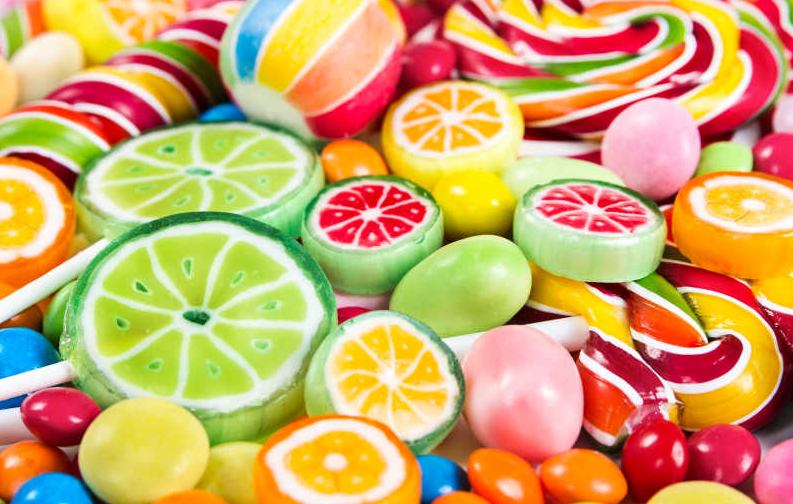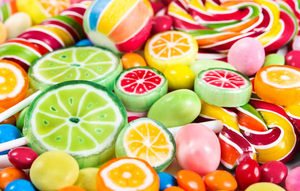
Detailed Explanation of Candy Inspection Methods and Standards Inspection and Audit Services for Warehouses and Factories
Candies, as direct consumable foods, their quality and safety directly affect the health of consumers. During the inspection, factory verification, and product certification processes of candies, a strict food safety control system must be established. This article will systematically introduce the inspection standards, testing methods, and quality certification requirements for candies, providing professional guidance for the quality control of related enterprises.
I. Classification of Confections and Key Inspection Points
1. Inspection of Hard Confections
The main ingredients are sugar and starch syrup, and it has a crispy and hard texture.
Inspection focus: Moisture content, microbial indicators, packaging integrity
2. Semi-soft candy inspection
Contains ingredients such as dairy products and oils, with a complex manufacturing process.
Inspection focus: Oil oxidation indicators, microbial control, texture stability
3. Inspection of sandwich candies
Double structure of the outer skin and the core body
Inspection Focus: Integrity of the core, difference in moisture activity between the core and the outer layer of the material
4. Inspection of Gummy Candy
Using gel as the coagulant, with a high water content
Inspection Focus: Use of preservatives, mold control, texture elasticity
II. Candy Inspection Hygiene Standards
1. Sensory Inspection Certification
Having the unique color, aroma, taste and form specific to the variety.
No odor, no visible impurities under the naked eye
The packaging is intact and there is no damage or leakage.
2. Physical and Chemical Index Certification
Heavy metal content: Lead ≤ 1mg/kg, Arsenic ≤ 0.5mg/kg, Copper ≤ 10mg/kg
Food additives: Used strictly in accordance with the provisions of GB 2760
Sulfur dioxide residue: Meets the requirements of the corresponding product standards.
3. Microbial Indicator Certification
Total colony count:
Hard candy ≤ 750 CFU/g
Soft candy ≤ 20,000 CFU/g
Middle-layer sugar ≤ 2,500 CFU/g
Gummy candies ≤ 1,000 CFU/g
Coliform bacteria:
Hard candy ≤ 30 MPN/100g
Soft candy ≤ 440 MPN/100g
Candy with filling / soft candy ≤ 90 MPN/100g
Pathogenic bacteria: Not detected
III. Candy Inspection Method Specifications
1. Physical and Chemical Inspection Certification
Sample processing: Take 10 representative samples. Crush the hard candies with a hammer and chop the soft candies into pieces. Then mix them evenly.
Pre-treatment: The organic substances were destroyed using the nitric acid-sulfuric acid method, and then the sample was diluted and tested.
Detection method:
Arsenic: Performed according to GB 5009.11 - Atomic Fluorescence Method
Lead: Performed according to GB 5009.12 - Graphite Furnace Atomic Absorption Method
Copper: Performed according to GB 5009.13 - Flame Atomic Absorption Method
2. Microbial testing and certification
Sample processing: Take 25g of packaged samples under sterile conditions and add 225 mL of sterilized normal saline.
Testing method:
Total colony count: GB 4789.2, cultured for 24 hours
Coliform bacteria: GB 4789.3 MPN method
Pathogenic bacteria: Conduct tests for Salmonella, Shigella, etc. in accordance with relevant standards
3. Inspection of Food Additives
Sweeteners: Acetosulfame potassium, sucralose, etc.
Colorants: Brilliant Blue, Carmine Red, Sunset Yellow, etc.
Preservatives: Benzoic acid, sorbic acid, etc.
IV. Candy Inspection and Certification Standard System
1. GB 9678.1-2003 Candy Hygiene Standard
Including hard candies, semi-soft candies, filled candies, and soft candies, etc.
The testing items include 23 indicators such as heavy metals, microorganisms, and additives.
2. GB 9678.2-2003 Standard for Chocolate Products
Applicable to chocolate and chocolate products
The key tests include heavy metal, additive and microbial indicators.
3. GB 17399-2003 Standard for Gum-Based Confections
Specifically for gum-based candies such as chewing gum
Special testing items: zinc content, dry weight loss, etc.
V. Inspection Process and Judgment Criteria
1. Sampling Plan
Performed in accordance with GB/T 2828.1, using the general inspection level II
Microbial testing requires the collection of samples in their original packaging, which is intact.
2. Key Points of On-Site Inspection
Review of Raw Material Inspection Records
Production process hygiene control inspection
Verification of storage conditions for finished products
Confirmation of packaging label compliance
3. Laboratory testing and certification
For each batch of products, an inspection report upon leaving the factory must be provided.
Regularly conduct type tests by sending samples to a third-party testing institution.
Key monitored items: Microbial indicators, heavy metal content, additive usage
4. Judgment Rules
The hygiene indicators are considered as a disqualification criterion. If even one indicator is not up to standard, the entire batch will be deemed不合格 (unqualified).
Inspection indicators and physical-chemical indicators that fail to meet the standards allow for retesting.
The inspection report must be signed by an authorized person to be valid.
VI. Inspection of Packaging and Labeling
1. Inspection of Packaging Materials
Direct contact materials must comply with food packaging hygiene standards.
The packaging is in good condition with no damage or leakage.
2. Label Identification Certification
Product name and ingredient list are truly accurate.
The production date and shelf life are clearly visible.
Storage conditions and consumption methods are fully described.
The production license number and the applicable standards are correctly indicated.
By establishing a comprehensive candy inspection system and strictly adhering to the inspection and certification requirements of national standards, it is possible to effectively ensure the quality and safety of candy products, provide consumers with safe and reliable food, and at the same time assist manufacturing enterprises in passing various factory inspection audits and market supervision spot checks.
分享这个商品

Detailed Explanation of Candy Inspection Methods and Standards Inspect
As a food that is consumed directly by the mouth, the quality and safety of candies directly affect the health of consumers.
